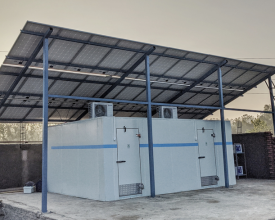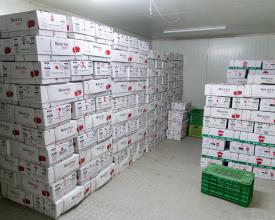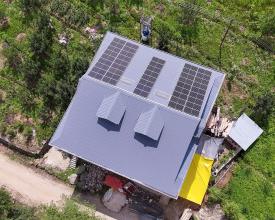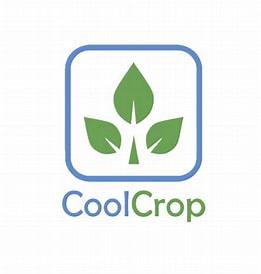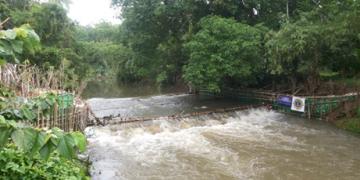
Affordable Access to Solar Powered Cold Storages
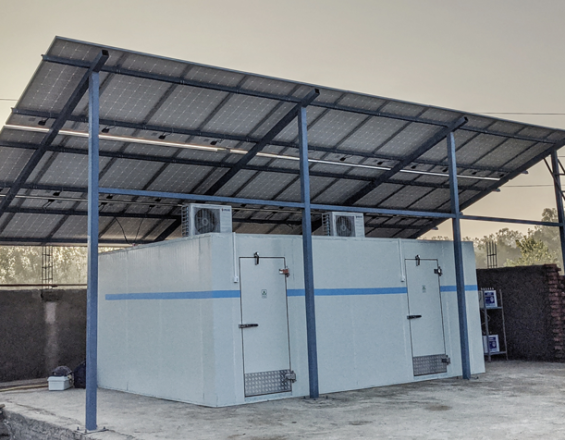
Apple farmers in India face high post-harvest losses and market volatility. While cold storages and processing infrastructure have the potential to significantly reduce the amount of produce going to waste and improve market linkages, it is out of reach for most Indian farmers due to high initial investment costs. To address this, the Green Innovation Centres for the Agriculture and Food Sector - India (GIC) and CoolCrop Technologies piloted a ‘Cooling as a Service’ (CaaS) model in 2021 and installed solar-powered cold storages near farms. Farmers only pay a user fee while a service provider handles investment, installation and operations. The model reduces post-harvest loss by up to 30% and improves realised prices by avoiding forced sales during market gluts. Integrating the CaaS model with services like solarised sorting and grading as well as a mobile application that supports shelf-life prediction and market information has further enhanced farmers’ benefits. CaaS also reduces emissions and creates jobs in rural India.
Contexto
Défis à relever
Environmental:
In Himachal Pradesh, post-harvest losses of up to 20% not only reduce farmers’ incomes but also contribute to avoidable greenhouse gas emissions and food waste. Frequent floods and landslides in the region disrupt supply chains and highlight the urgent need for resilient, decentralized storage infrastructure.
Economic:
Without access to affordable, farm-level cold storage, smallholder farmers are often forced to sell during market gluts at low prices. High upfront investment costs for decentralized, solar-powered solutions remain a major barrier to adoption.
Social:
Smallholders face low bargaining power, limited access to value-adding infrastructure like sorting and grading, and vulnerability to unfair quality assessments by intermediaries. Geographic isolation further deepens rural inequalities.
Ubicación
Procesar
Summary of the process
The solution's components are designed to reinforce each other. Solar-powered cold storages and value-added services at the farmgate improve the ability of farmers to preserve the quality of their produce and delay sales, while the CaaS model makes this infrastructure accessible without high upfront costs. Capacity building empowers farmers to use the systems effectively and maximize benefits, while engagement with government partners helps to institutionalize financial support mechanisms, which aims to expand adoption and to ensure long-term viability. Together, the building blocks address technological, financial, and capacity barriers, which creates an integrated pathway for large-scale impact.
Building Blocks
Renewable Energy Solutions: Customised for Smallholder Farming
Cold storages are not new to Indian agriculture, with more than 15,000 storages with a capacity of around 1,000 MT located throughout the country. However, access to these remains quite limited for smallholders in remote areas. Closing this gap requires solutions which are adequate for such remote contexts, and the solar-powered cold storages promoted by GIC are a feasible option.
The promoted systems are ideal, as the smaller 5 to 30 MT units allow for decentralised storage at the farm gate. The system allows for control of temperature and humidity according to the specific needs of the chosen produce, enabling farmers to maximise the shelf life of their crops. In addition to the benefits and income from storage, the solution allows for net metering of surplus energy, providing additional income and enhancing the system’s feasibility.
To enhance the feasibility of the service model, two value-added services were integrated with the solar-powered cold storages: solar-powered sorting and grading operations, and the mobile application "Your Virtual Cold Chain Assistant" (YVCCA). Solar-powered machinery for sorting and grading was installed at the farm gate, giving farmers access to reliable information on the quality of their produce to strengthen their position in price negotiations. YVCCA supports improved cold storage use by predicting the shelf life of apples based on quality assessments at harvest and monitoring temperature and humidity inside the storage units, which helps farmers optimize storage duration and market timing.
Enabling factors
- Availability of a technology provider with the technical expertise to install, operate and maintain solar-powered cold storage units in remote and high-altitude areas
- Basic enabling infrastructure, including road connectivity or grid access for net metering
Cooling as a Service: The Business Model
The CaaS model enables smallholder farmers and cooperatives to access solar-powered cold storage infrastructure without the burden of high initial investments and ownership. A technology provider (CoolCrop) installs, operates and maintains the cold storage units at or near the farmgate, and farmers or cooperatives pay a service fee to use the facility. This fee can be based on the quantity of produce stored, such as by weight or crate, or defined as a flat rate and is based on the total costs of installing, operating, maintaining, and financing the equipment. The viability of the intervention depends largely on selecting an appropriate pricing strategy, which covers operational costs while remaining affordable to formers, and furthermore the financial structure of the initial investment. Service providers earn revenue through storage and transportation fees, and potentially through net metering of surplus solar energy. Furthermore, the model promotes the addition of value-added services at the farmgate through the inclusion of services conventionally performed at packhouses. Solar-powered machinery for sorting and grading can be installed alongside the cold storages, creating an additional income stream for the service model. Farmers and cooperatives benefit from the reduction of post-harvest losses, preservation of quality and shelf life and the possibility to delay sales beyond market gluts, leading to improved income.
In Himachal Pradesh, poor accessibility and weak road infrastructure expose storage providers to high operational costs. The management and maintenance of cold storage units remains the greatest hurdle to achieving economic sustainability. To address these challenges, the model includes a long-term strategy of distributing cold storage units clustered geographically. However, this becomes economically viable only after the model is scaled up and widely disseminated, requiring substantial upfront capital or external subsidies in the early phase.
Enabling factors
- Interest and coordination capacity of farmer groups or cooperatives to support shared use and communication with the service provider
- A well-designed user fee model that balances affordability for farmers with financial viability for the service provider
- Reliable demand for cold storage services within a defined region, supported by seasonal apple production and sufficient marketable surplus
- Access to finance or support schemes that help reduce the investment burden and support early-stage viability
Enabling Support from Government Schemes
To enable large-scale adoption of the CaaS-model, financial support is needed to lower the high initial investment costs. The pilot initiatives were funded by GIZ and UNDP. However, adoption at scale requires significantly larger volumes of funding, which, in the Indian context, is most realistically achievable through public support mechanisms that can reach smallholder farmers.
To address this, GIC worked closely with its political partners to promote the creation of a government support mechanism under the Mission for Integrated Development of Horticulture (MIDH). As part of this effort, GIC collaborated on the development of a cold storage unit at the National Centre for Cold Chain Development (NCCD), which serves as a basis for drafting official guidelines. These guidelines include technical specifications and eligibility criteria for accessing government subsidies for decentralized cold storage systems.
Once adopted, these guidelines will help institutionalize the solution and expand access for smallholder farmers, improving affordability and facilitating wider adoption in remote and underserved areas.
Capacity Building
In addition to supporting farmers’ access to cold storages and value added services, the GIC project conducted awarenessraising trainings for farmers covering not only the operation of the technology itself, but also broader insights on how to avoid post-harvest losses. These trainings were designed as a replicable training module to benefit farmers on a broader scale. The module enables other practitioners and organisations in the enabling environment to learn about the approach and to pass practical knowledge on to farmers, empowering them to appropriately manage their produce and thereby maximising income.
The module includes a variety of topics aimed at giving farmers a comprehensive and actionable overview of the need for cold storage, the technologies and methods available, and how to adopt them effectively, including information on funding and government programs enabling their access.
In addition to raising awareness, GIC aimed at strengthening farmers’ capacity to make use of cold storages systems in practice and covered topics such as system operation and crop-specific storage needs.
Enabling factors
- Trainings were carefully designed to be replicable.
- Technical knowledge is combined with broader post-harvest loss management.
- Trainings teach farmers how to access government schemes.
- The module empowers not just direct farmers, but also practitioners and other organizations to disseminate knowledge further.
Impacts
Economic Impacts
The intervention has led to increased farmer incomes by enabling delayed sales beyond harvest-season price gluts and reducing post-harvest losses by up to 30%. Access to cold storage and value-added services has improved farmers' bargaining power and reduced dependence on private intermediaries. The model also reduced transport costs and supported market linkages. Revenue opportunities for service providers include storage, transport, sorting, grading, and potential income from solar net metering.
Environmental Impacts
Solar-powered cold storages and sorting units avoided CO₂ emissions from diesel and grid electricity. Reduction of food losses further mitigated unnecessary emissions from production and decomposition. Across four pilot sites, annual emission avoidance ranged from 5.8 to 26.2 tonnes of CO₂. The system contributes to climate change mitigation and supports SDG 7, 13 and 2.
Social Impacts
The model strengthened resilience to climate and supply chain shocks, particularly during floods and lockdowns. Farmers gained greater control over when and where to sell, improving autonomy. The intervention has the potential to create many rural jobs by increasing employment opportunities in post-harvest management and processing.
Beneficiaries
Smallholder apple farmers, cooperatives, and service providers directly benefit through reduced losses, improved incomes, and new revenue streams. The model is transferable to other horticultural value chains and regions with similar challenges.
Sustainable Development Goals
Story
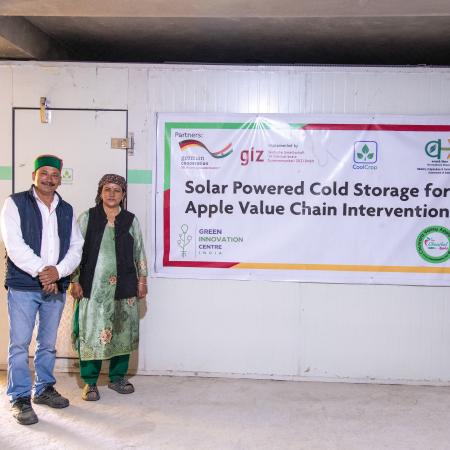
The decentralized solar-powered cold storage of 20 Metric Tonnes capacity, installed in Shiladesh village, Rohru, Shimla serves 6 farmers in storing their produce through the peak season, or in times of disasters when the road networks are closed. It helps them in getting better prices when the supply of apples has reduced, while avoiding the risks and burden due to a large upfront investment. They only pay a user fee for storing their produce to a private sector company, who undertakes the initial investment and maintenance.
The cold storage can be used for any horticultural or agricultural crop grown in the area. Decentralization can increase its penetration in the mountainous terrain, while solar energy avoids greenhouse gas emissions,
reduces electricity costs and can open up an additional stream of revenue through net-metering.
The 5 cold storages that are been piloted in Shimla and Kullu districts, Himachal Pradesh, India, have collectively avoided over 54,000 kgCO2 of GHG emissions, prevented loss of over 6,400 kg crops, increased incomes between 45-150 %, and created 17 direct and indirect jobs.
